How and when to plant daffodil bulbs plus expert growing tips for the best blooms
Learn how and when to plant daffodil bulbs and you can bring a splash of sunny yellow to the post-winter garden – it's simple with these steps
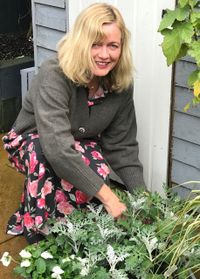
Graham Rice
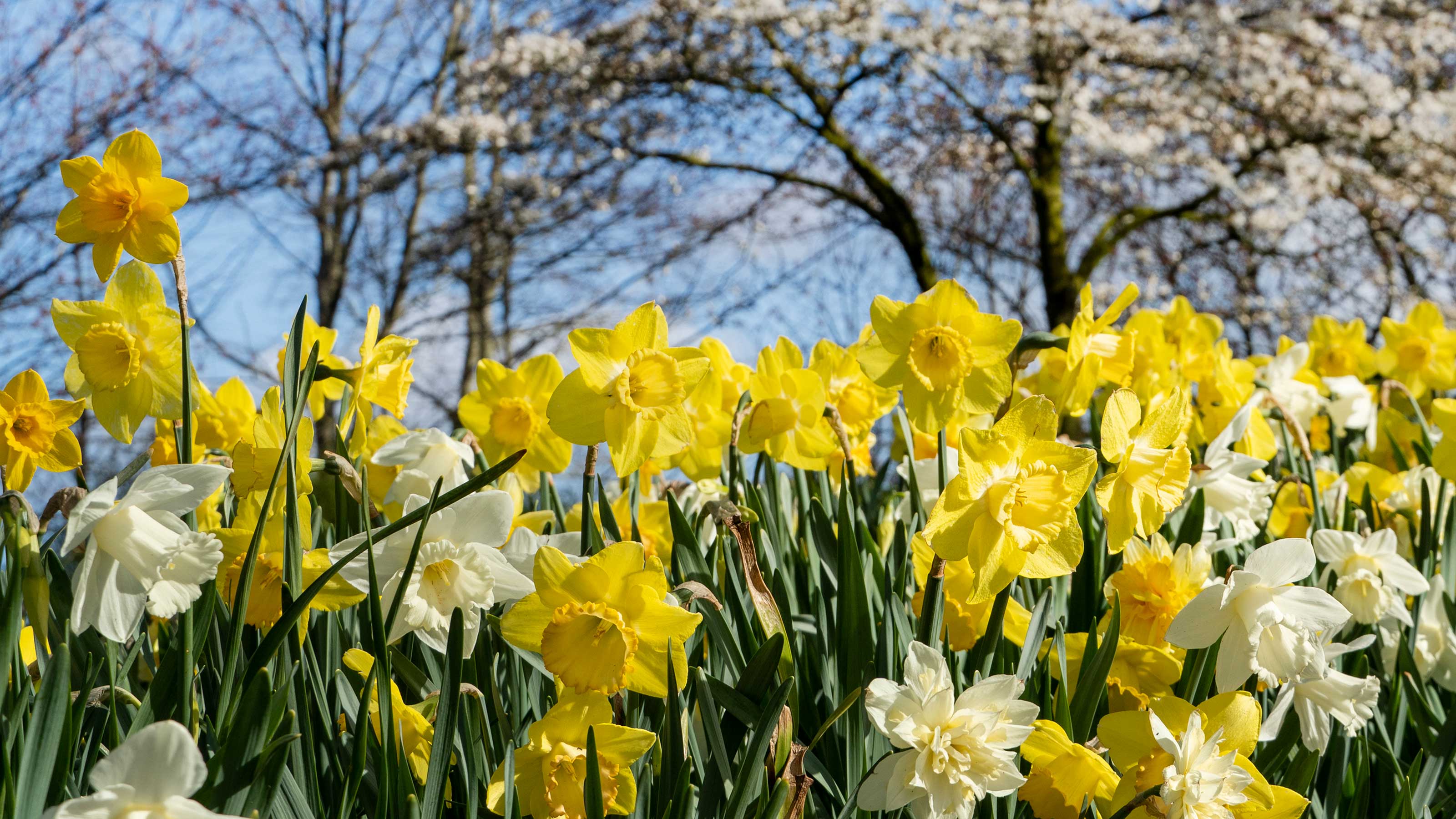
Want to know how and when to plant daffodil bulbs, plus how to care for them once they've flowered? Follow our expert advice and you'll be rewarded with a wonderful display that will lift the garden after a long, gray winter.
Daffodils are a must-have when it comes to planting bulbs. Not only are they reliable and easy-going, but they will come back year after year, too. And there is plenty of choice. In fact, there are around 13,000 different varieties of daffodil, which is the common name for any plant which belongs to the Narcissus group. They can be split into 13 main groups, characterized by their color, form, size and shape. Some have large trumpets and single flowers, others are cup-shaped, while others offer clusters of blooms on the same stem.
Whether you prefer pops of primary yellow, dreamy whites, gold, or uplifting orange, there's a dependable daffodil to suit every color palette. And there are lots of ways to plant them – whether that's a golden ribbon of flowers running along a verge, a group of bright pots placed on a patio, or some splashes of sunshine nosing through the lawn.
We've brought together plenty of advice on how and when to plant daffodil bulbs, plus how to care for them once they appear in spring.
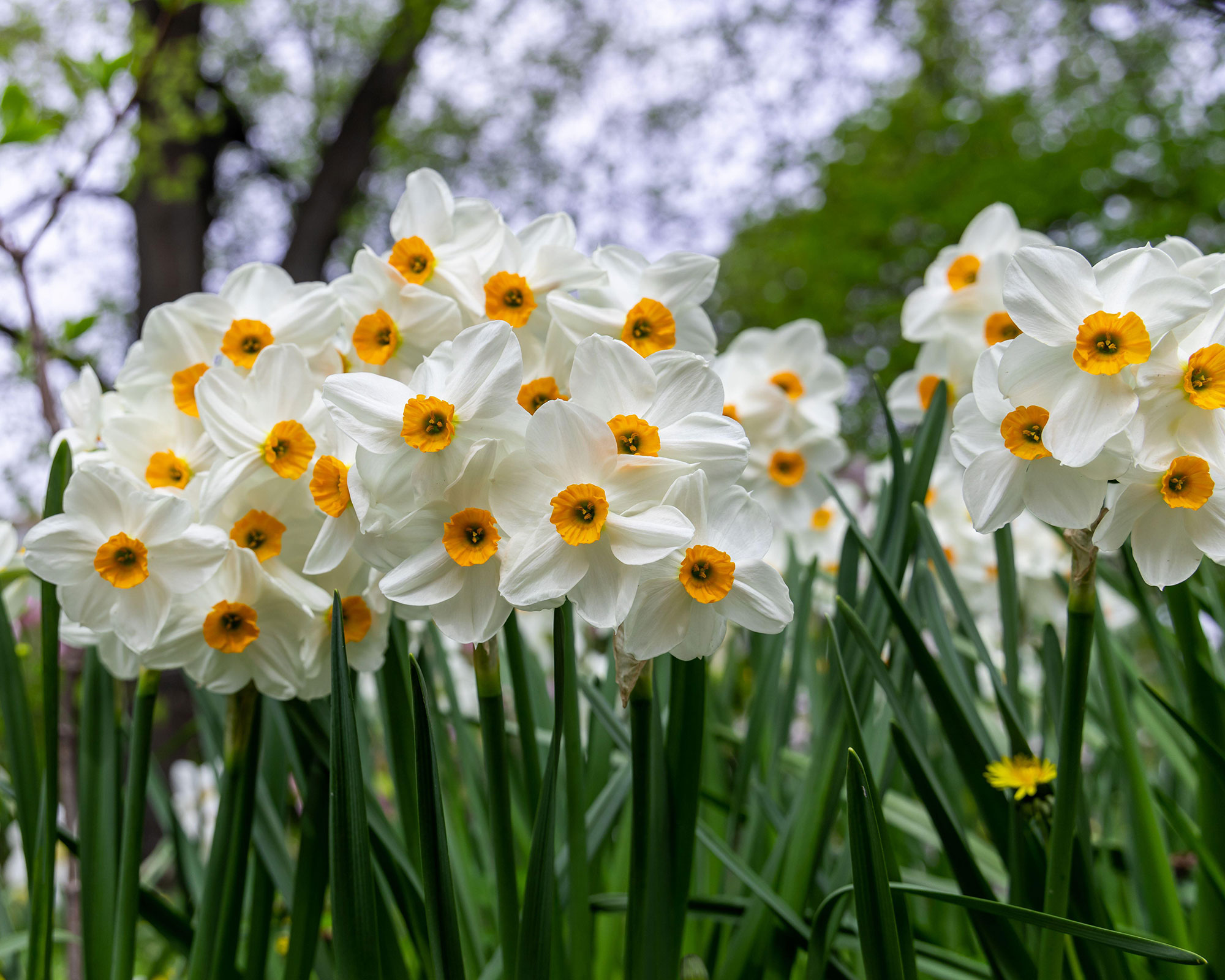
When to plant daffodil bulbs
Knowing when to plant daffodil bulbs is the first step in creating a gorgeous springtime display.
Plant the bulbs in early to mid fall, suggests Anne Swithinbank, a gardening expert of Amateur Gardening. This will allow them to establish deep root systems, which help them take up water in spring to fuel up next year's bulbs. They will flower from late winter to late spring, depending on the variety and when you planted them.
If you discover a bag of unplanted bulbs in late fall, or even early winter, it is still worth planting them, Anne adds. 'They eventually sort themselves out.'
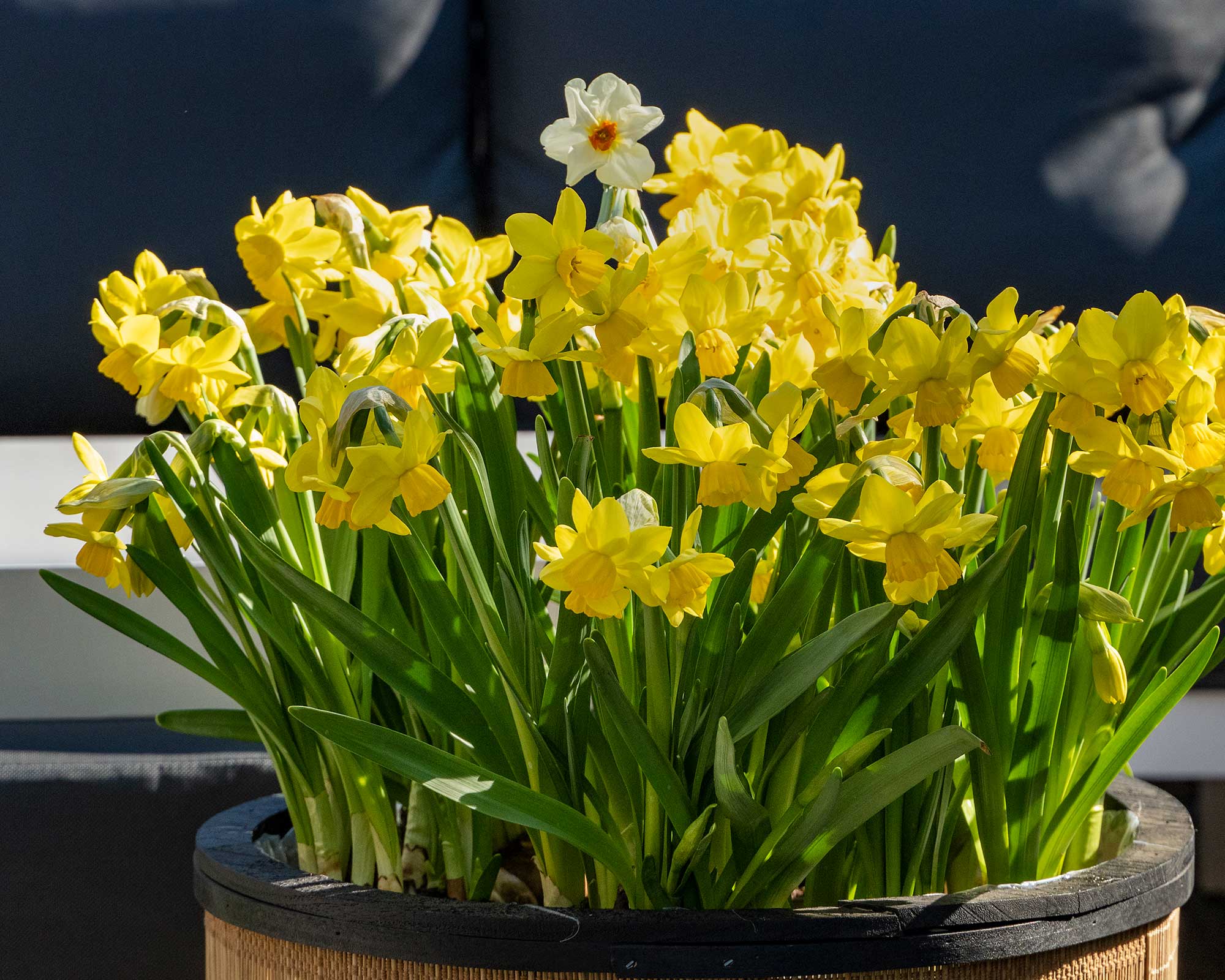
Where should you plant daffodil bulbs?
Daffodils generally prefer a sunny spot in well-drained soil – this is particularly the case with smaller types known as 'jonquils' – although some can cope with light shade.
As with many bulbs, including hyacinths, avoid putting them in heavily waterlogged soil or very shady spots. These sorts of conditions can prevent them from flowering and encourage the bulbs to rot.
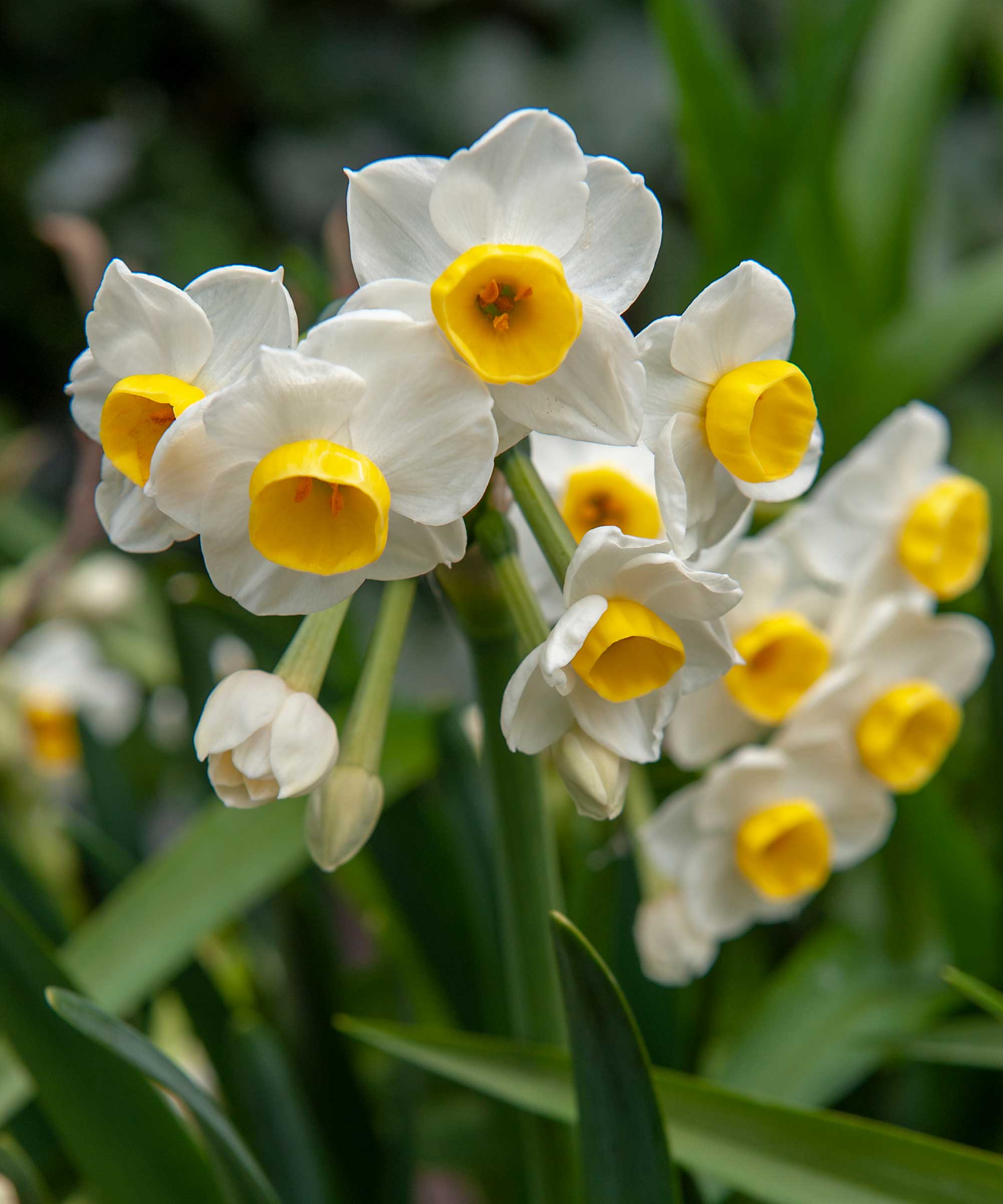
How to plant daffodil bulbs in the ground
When considering your springtime flower bed ideas, be sure to put daffodils on the list. They're so simple to plant.
- Start by digging over the soil and removing any weeds.
- Add some homemade compost or buy a bag of well-rotted manure and fork some in.
- Take a bulb and plant it in the soil, at a depth roughly three times its height. Make sure the pointy side is facing upwards. 'Take care when handling as some bulbs are treated with fungicide and sap can irritate the skin,' advises Anne Swithinbank. For this reason, it's best to wear gardening gloves.
- To make a good clump that will create a pool of color, plant at least seven bulbs together in a cluster. They should be planted about 4in (10cm) apart.
- Cover the bulbs with soil. There's normally no need to water them after planting unless the soil is very dry.
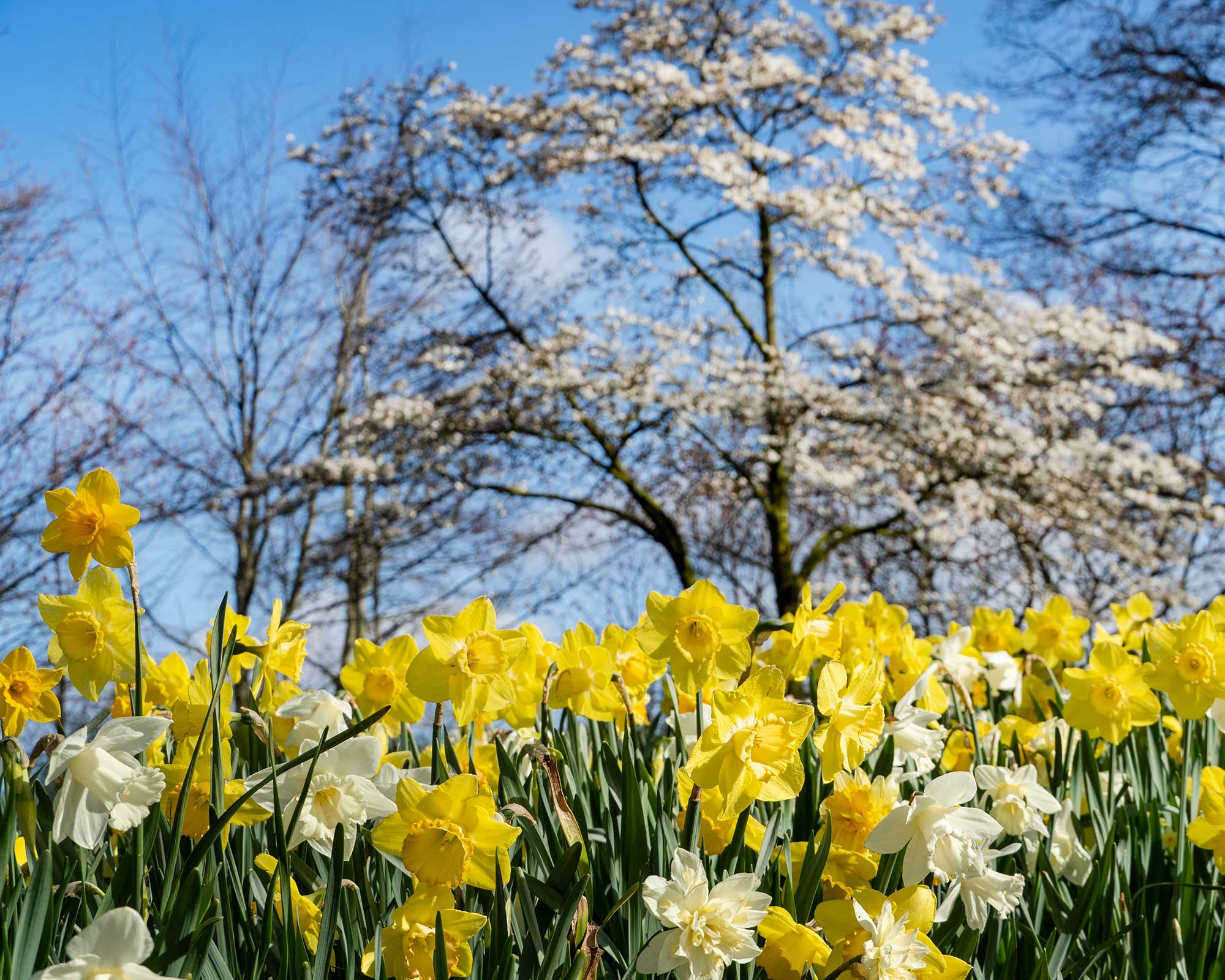
How to plant daffodil bulbs in containers
Daffodils are perfectly suited to container gardening. A pot of daffodils can add instant cheer to a drab patio or front garden, or they may be used to brighten up a window box.
You can even get creative with bulb lasagne ideas and layer them up with other spring bulbs for a long-lasting display.
- Find a pot with drainage holes, and put some pebbles or broken bits of pot in the bottom. This helps with drainage and air circulation.
- Fill three-quarters of the pot with compost such as John Innes No 2 or John Innes No 3.
- Add some slow-release fertilizer and a handful of grit, and then, wearing gloves, plant the bulbs in the container. You can set the bulbs a little closer than you would in the ground, but make sure they're not touching. They should be at a depth roughly three times the height of the bulb. Make sure the pointed side is facing upwards.
- Cover with soil and water well.
You can also force bulbs indoors – a lovely way to brighten up the home.
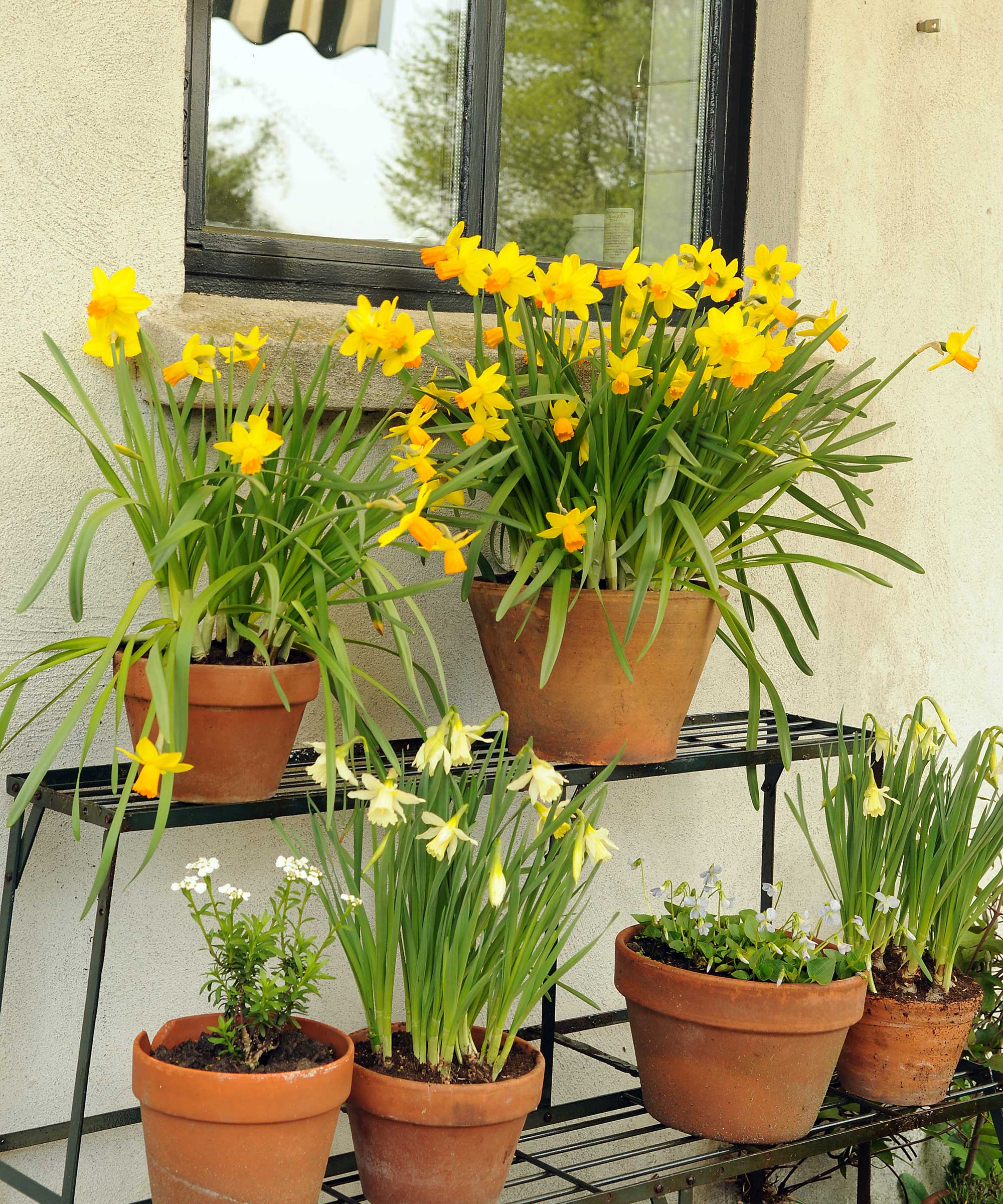
How do you get daffodils to grow in the grass?
There's no prettier sight than naturalized daffodils – the term for flowers that grow through the grass. It is an easy effect to achieve.
- Take a handful of bulbs and toss them up in the air. Planting them where they land will create a natural and informal effect.
- Using a bulb planter or a small, sharp-edged trowel, remove plugs of turf, and insert each bulb into each cavity at a depth of three times their height. Replace the turf on top.
- For a swathe of bulbs, cut out an H-shaped segment of turf and drop the bulbs into the space. Replace the turf lid, and gently water.
- The flowers will multiply over the years.
Why not learn how to plant crocus bulbs too, to add to the springtime display?
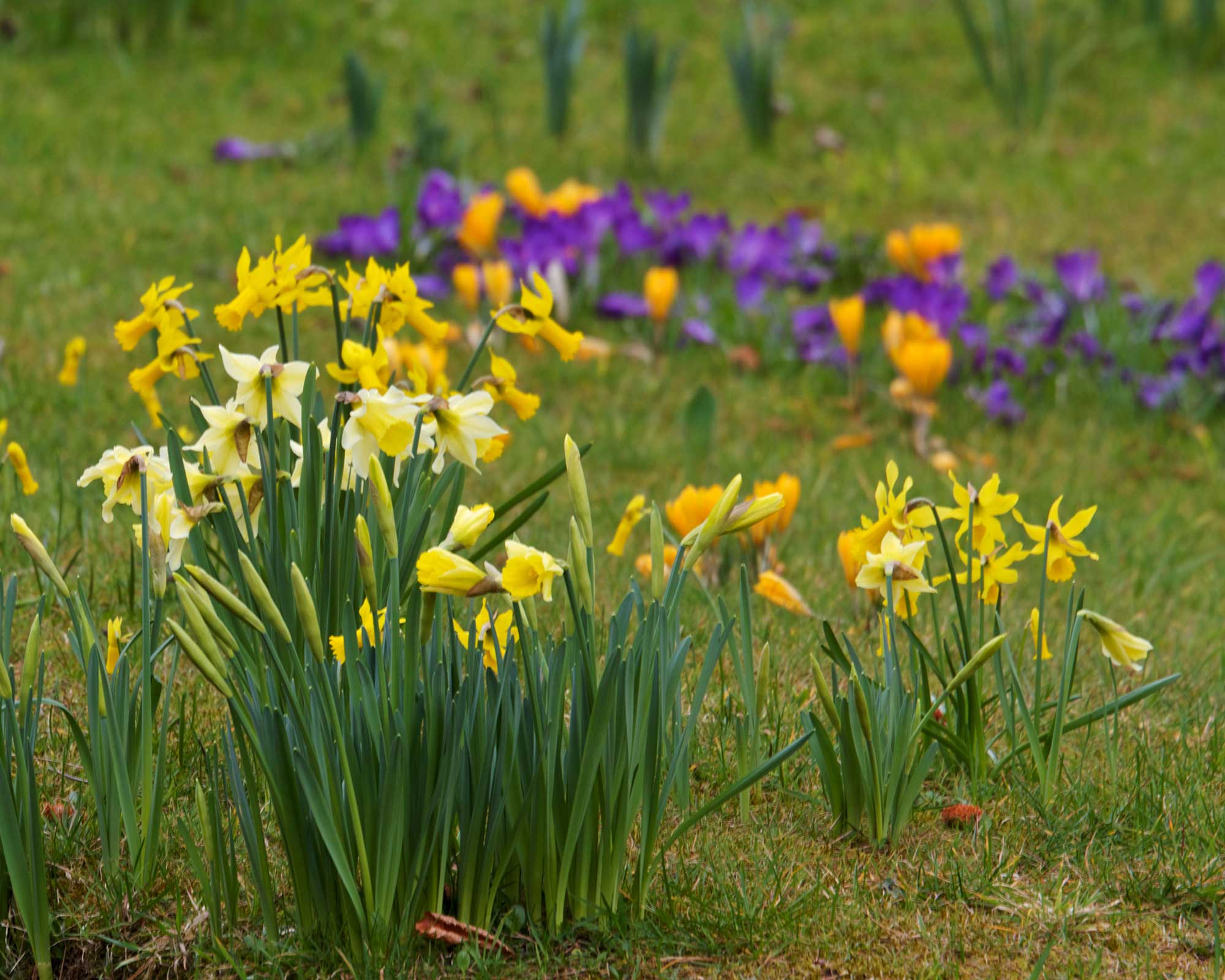
How to care for daffodils
Daffodil care is simple as they are resilient plants. There are four easy things that you can do that will really encourage them to thrive, flower and multiply.
Firstly, deadhead daffodils when the flowers turn brown. This is easily done by nipping off the dead flowers between thumb and finger at the top of stems: no pruners or snips are needed.
Secondly, do not cut off the dying leaves until at least early summer when they have turned yellow. This will ensure that the bulbs build up enough reserves to flower well the following spring.
'Never knot foliage as this prevents leaves from working properly to refuel the bulb for next year,' says Anne.
Thirdly, feed them. This can be done by sprinkling a general fertilizer across the clumps or drifts as the shoots first emerge. Alternatively, use a liquid feed two or three times between shoot emergence and flowering.
Finally, when daffodils are naturalized in grass, be sure not to mow the lawn until early summer when the leaves have turned yellow.
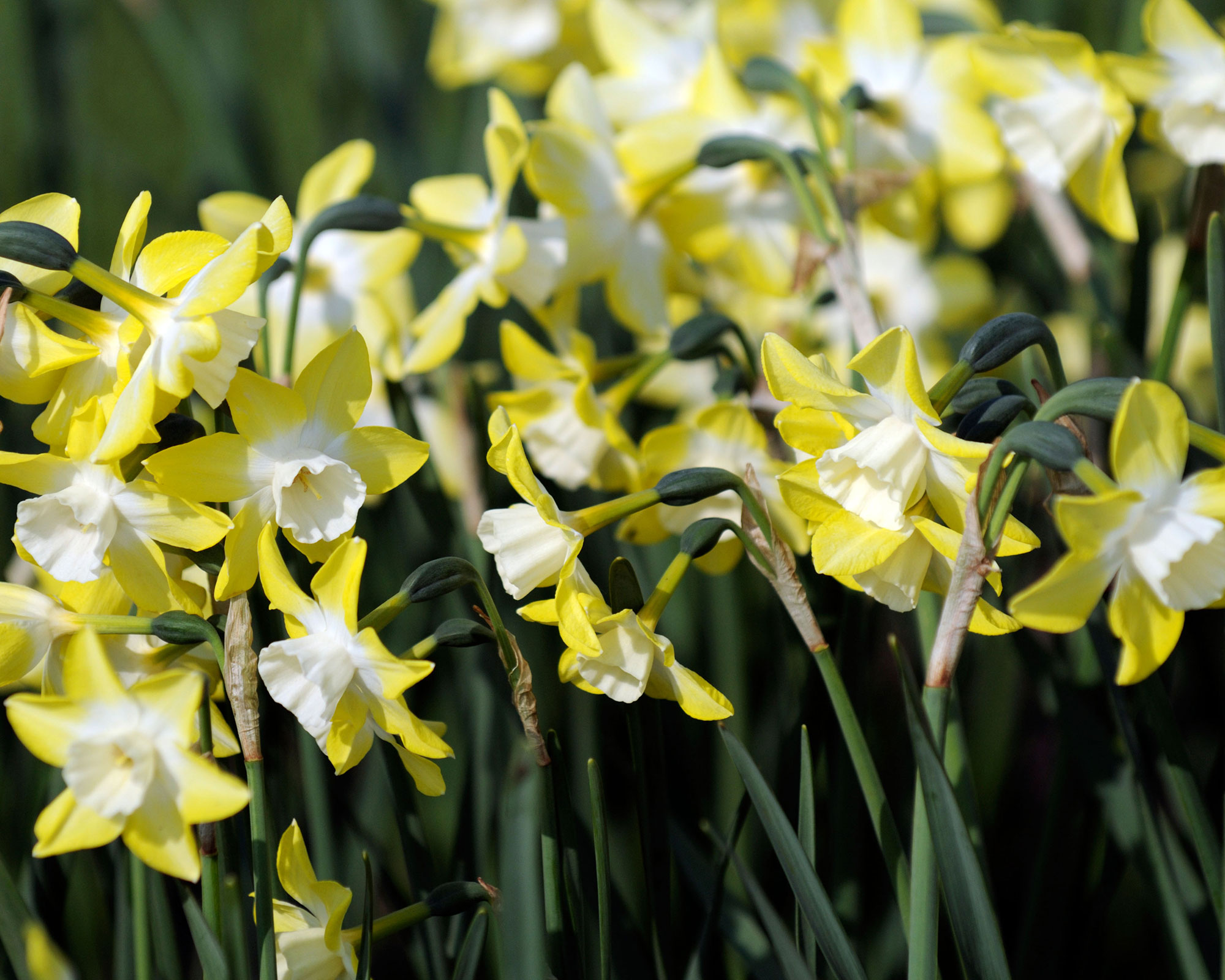
What should you do if your daffodils aren't flowering?
Daffodils are one of the more reliable bulbs for flowering year after year. However, if you notice that your show is depleting and you're no longer getting all those beautiful blooms as expected, then there are a few tips you can try.
'Daffodils coming up all leaf and no flower are referred to as "blind",' says Anne Swithinbank of Amateur Gardening. 'This can happen if they are in deep shade, have suffered from spring drought, or the bulbs are so congested below ground they cannot swell to flowering size.
'Try deadheading and liquid feeding,' she suggests, 'but lifting, dividing and replanting is often the answer, either while in leaf, or as leaves wither.' Dormant bulbs are easy to lift, dry off, store and replant in fall.
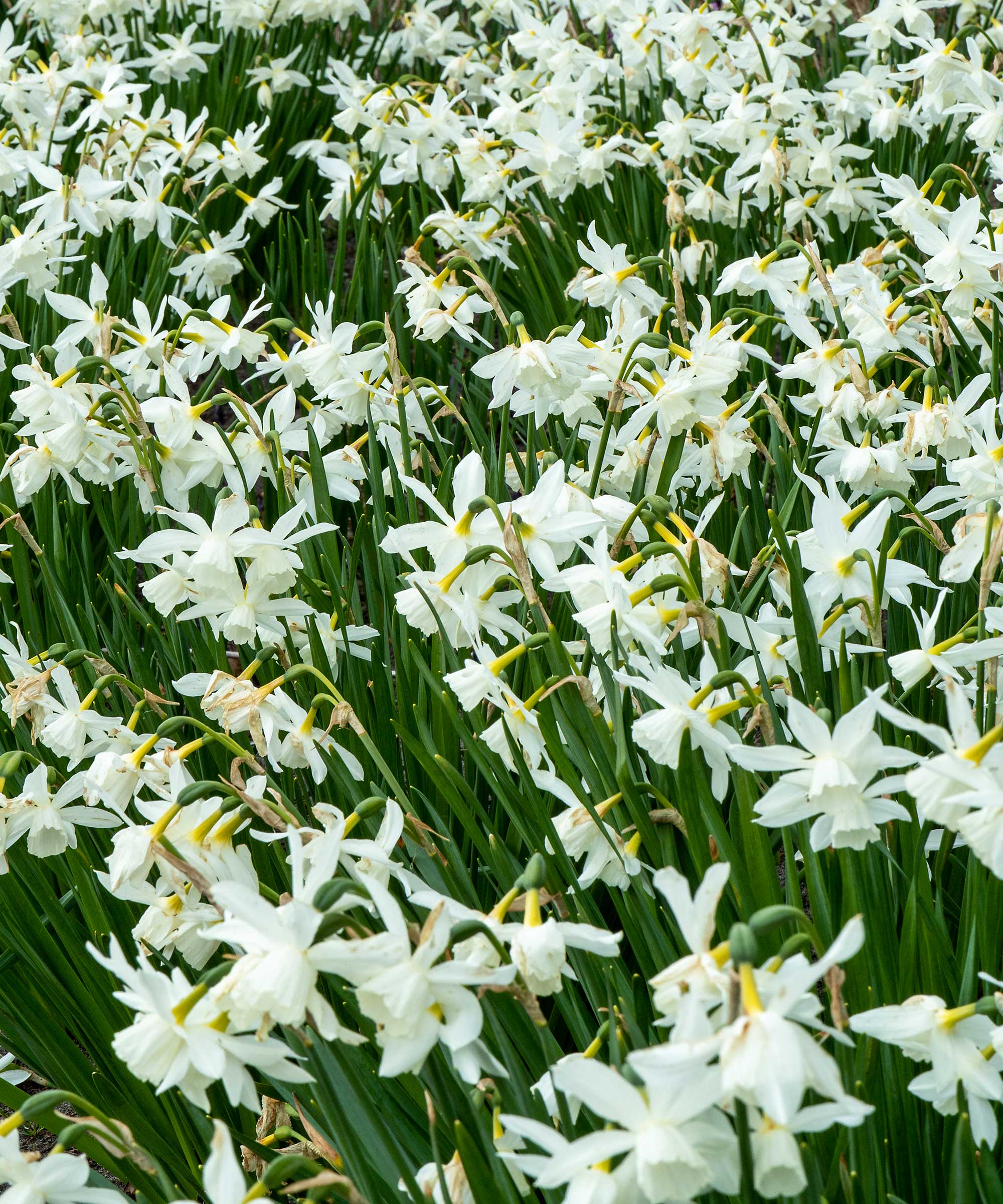
Can you leave daffodil bulbs in the ground all year?
Learning how to lift and store tulip bulbs will allow you to replant them each year for fresh new blooms. Daffodils, however, are much less maintenance as you can simply leave them in the ground.
They will multiply steadily until, when they become overcrowded, flowering tails off. At this point it pays to dig them up, as mentioned above: the clumps should be split and the bulbs immediately replanted.
Of course, when daffodil foliage dies down in early summer, an unsightly gap will be left in your display. There are two ways to fill the gap. Annuals can be planted over the daffodil bulbs (take care not to damage the bulbs when planting), or seeds of quick-growing annuals, like alyssum, can be sown over them. These will flower later in the summer.
Another approach is to plant perennials such as hostas or pulmonarias, whose foliage will spread over where the daffodils flowered.
If you've planted your daffodils in pots, the bulbs can be left in the same containers for a couple of years. But, it's worth refreshing the top layer of compost annually and also adding some fertilizer to ensure plenty of super healthy flowers.
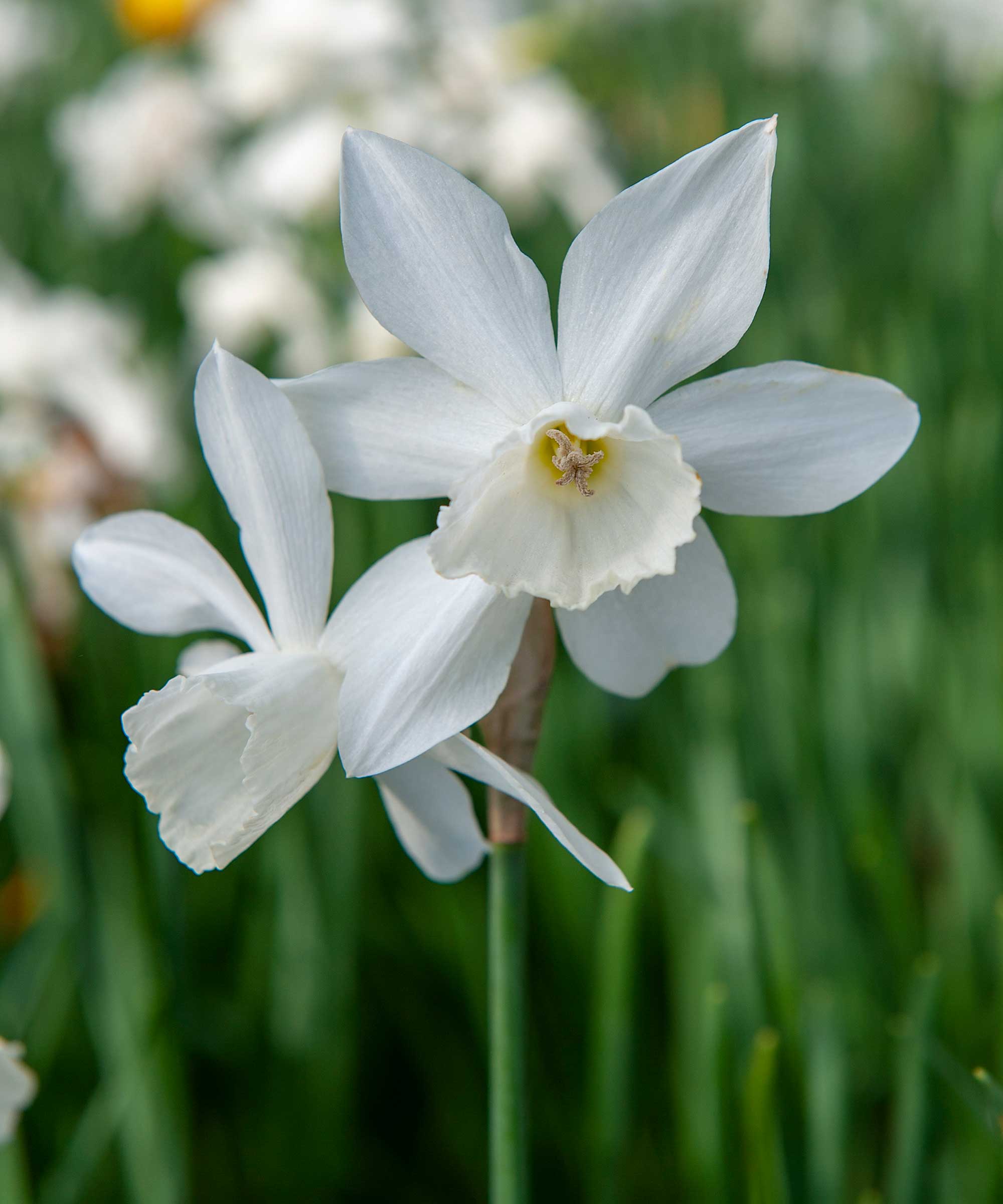
Are daffodils deer resistant?
The New Jersey Agricultural Experiment Station has a program in which they test garden flowers for deer resistance. They rate daffodils as 'Rarely damaged', the top rating out of four.
This means they are pretty reliable deer-resistant plants, although the occasional flower may be nipped off.
Which varieties of daffodil bulbs should you choose?
There are lots of different types of daffodils to pick from for your garden.
Early varieties are perfect for a dose of post-winter color. 'Rijnveld's Early Sensation', a classic, plain golden-yellow daffodil, is a reliable choice that will push through soon after Christmas.
If you're looking for clusters of flowers on one stem, you can't go far wrong with the popular 'Tête à Tête'. Standing just 6in (15cm) tall with bright yellow trumpets, it's perfect for small spring containers and rockeries. Anne Swithinbank also suggests 'Minnow', which is creamier in color with flat, yellow cups and works well for window boxes.
For something strikingly different, 'Smiling Maestro' has bright yellow petals with a hot orange, cup-shaped trumpet. It's not subtle but it will certainly make a splash. You could also try 'Stint', as Anne suggests. It has flowers of a bright, almost acid lemon hue with slightly richer cups – usually one to three per stem. 'The heads nod prettily and look great alongside blue-flowered muscari or scilla in borders or containers,' she adds. Why not learn how to plant a bulb lasagne and combine all three?
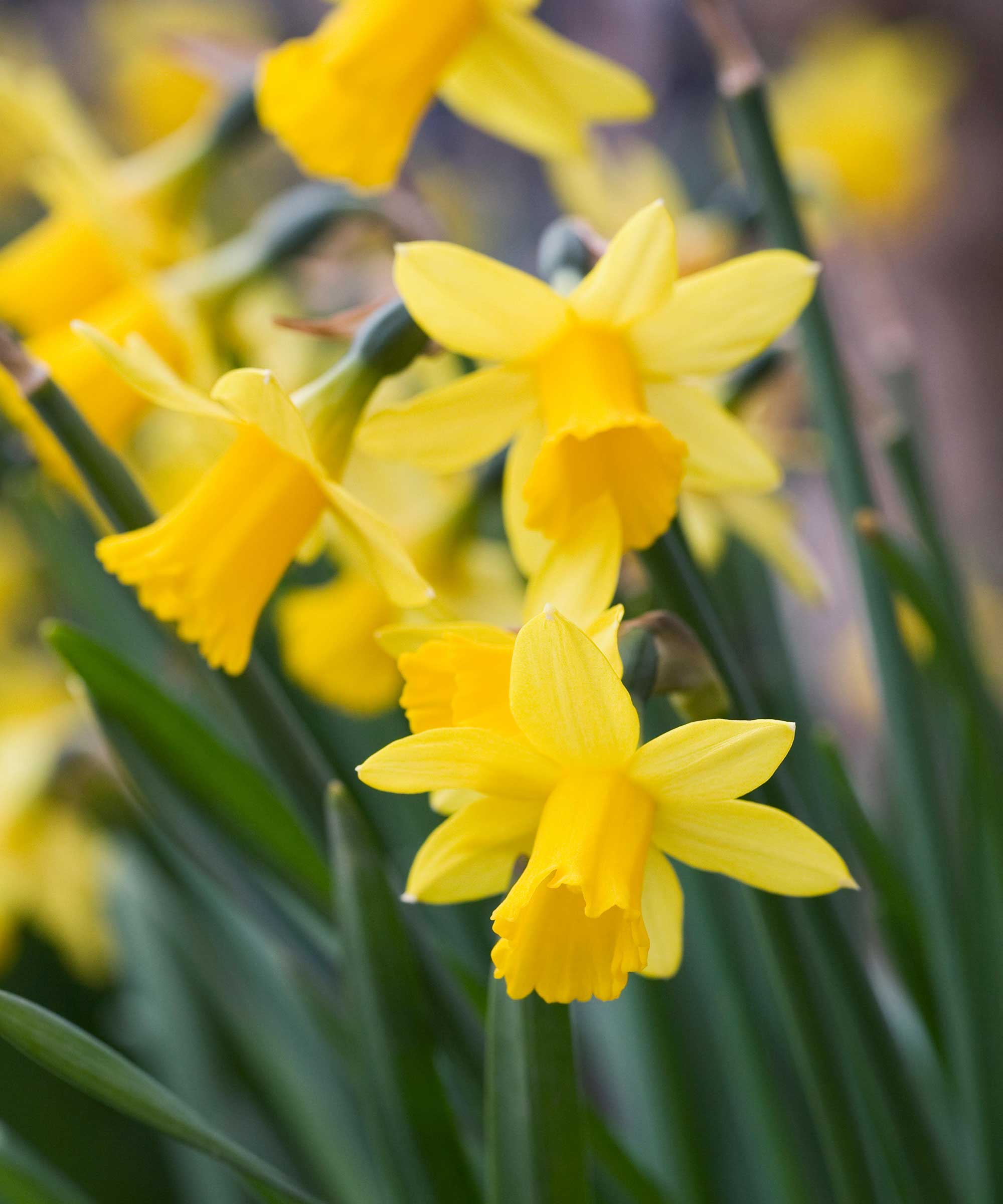
If yellow is not your thing, opt for elegant white flowers instead. Try 'Petrel' for two to five nodding flowers on upright stems. For a warmer-toned, creamy-colored bloom, 'Toto' is a good choice.
And if you're looking for scent, 'Erlicheer' may be the right daffodil for you – an exotic-looking double flower with a delicious perfume. Anne also recommends 'Avalanche' which has white petals and lemon cups, each richly fragrant.
And, if you have space for daffodils to multiply, try 'Hawera'. It has a dainty, pale flower with a short trumpet. The clumps should increase from year to year and are a lovely way to jolly up a lawn.
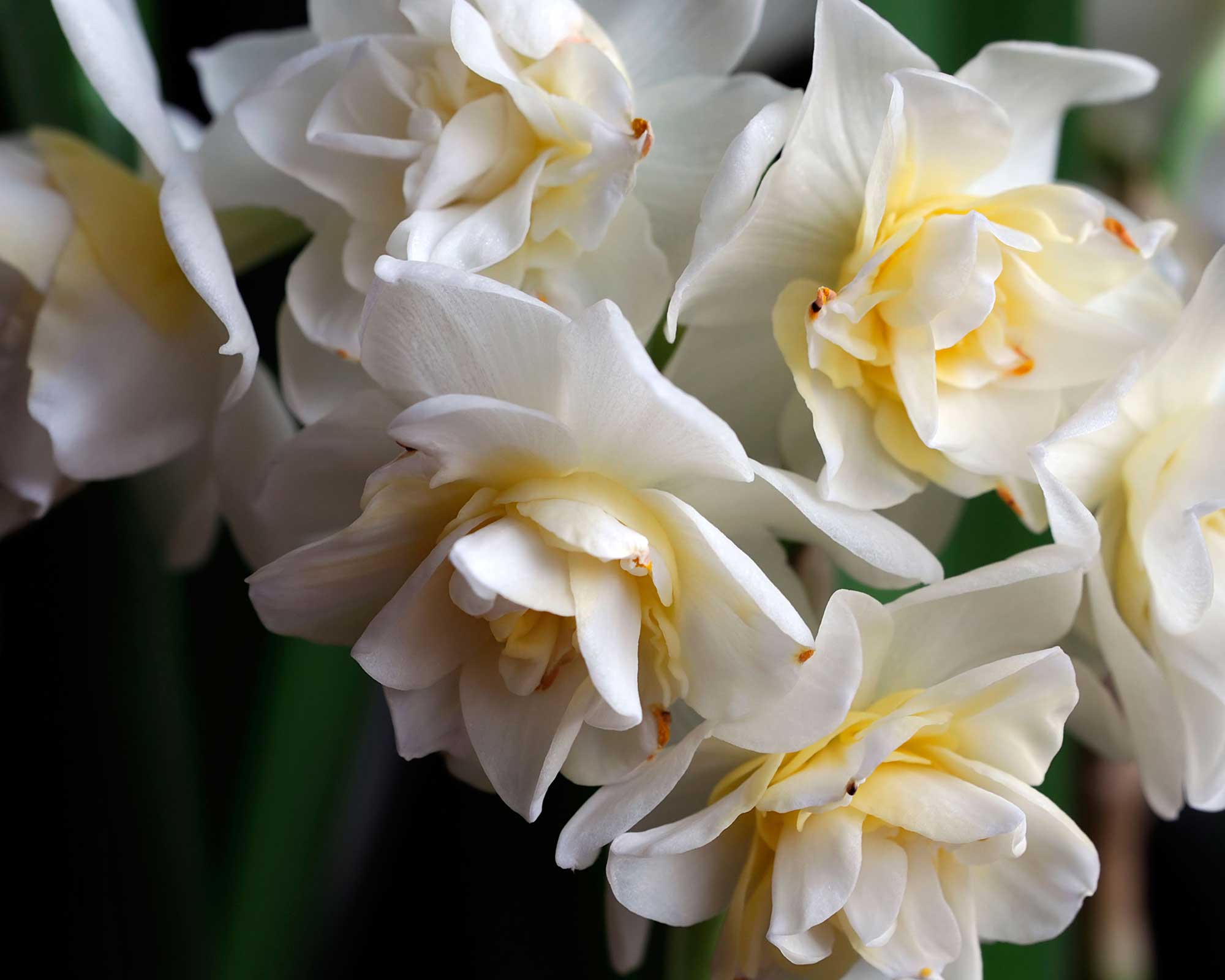
How to buy daffodils
Most daffodils are bought as dry bulbs in late summer or fall. Garden centers and other retail outlets offer them in packs of anything from five to 25 or, occasionally, in large sacks. A color picture, description and planting instructions will be displayed on the pack. If you are buying them in person, choose large, firm bulbs and avoid any which show signs of mold.
A far wider range of varieties is available by mail order from specialist bulb suppliers who offer them in packs of five to 25, with some popular varieties available by the thousand.
Daffodils are also available as 'Mixed' and these packs will include an unpredictable blend of unnamed varieties of different kinds and in different colors. The price is often very attractive, making them a tempting way to save money at the garden center, but because the different varieties flower at different times, the display can be a little thin.
Daffodils, especially dwarf varieties, are also sold in garden centers and other retail outlets in bud or in flower. These are ideal for adding a bright spark to spring containers.
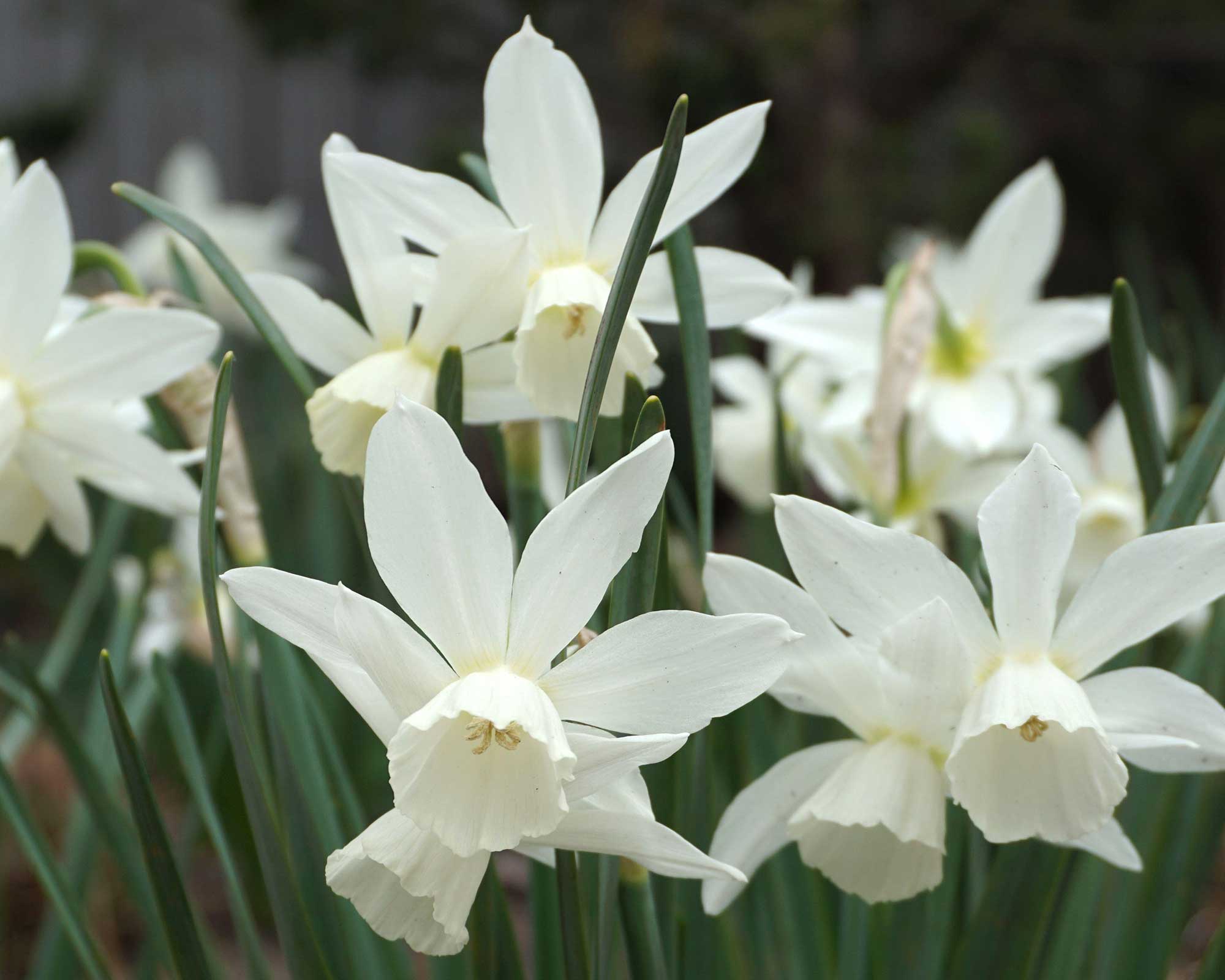
Where to buy daffodil bulbs
Now that you know how and when to plant daffodil bulbs, and how to care for them once they've grown, you probably want some of your own. We've rounded up some quicklinks to help start your search.
Shop daffodil bulbs in the US:
- Shop daffodil bulbs at Burpee
- Shop daffodil bulbs at Nature Hills
- Shop daffodil bulb at Dutch Grown
- Shop daffodil bulbs at Amazon
- Shop daffodil bulbs at Lowe's
Shop daffodil bulbs in the UK:
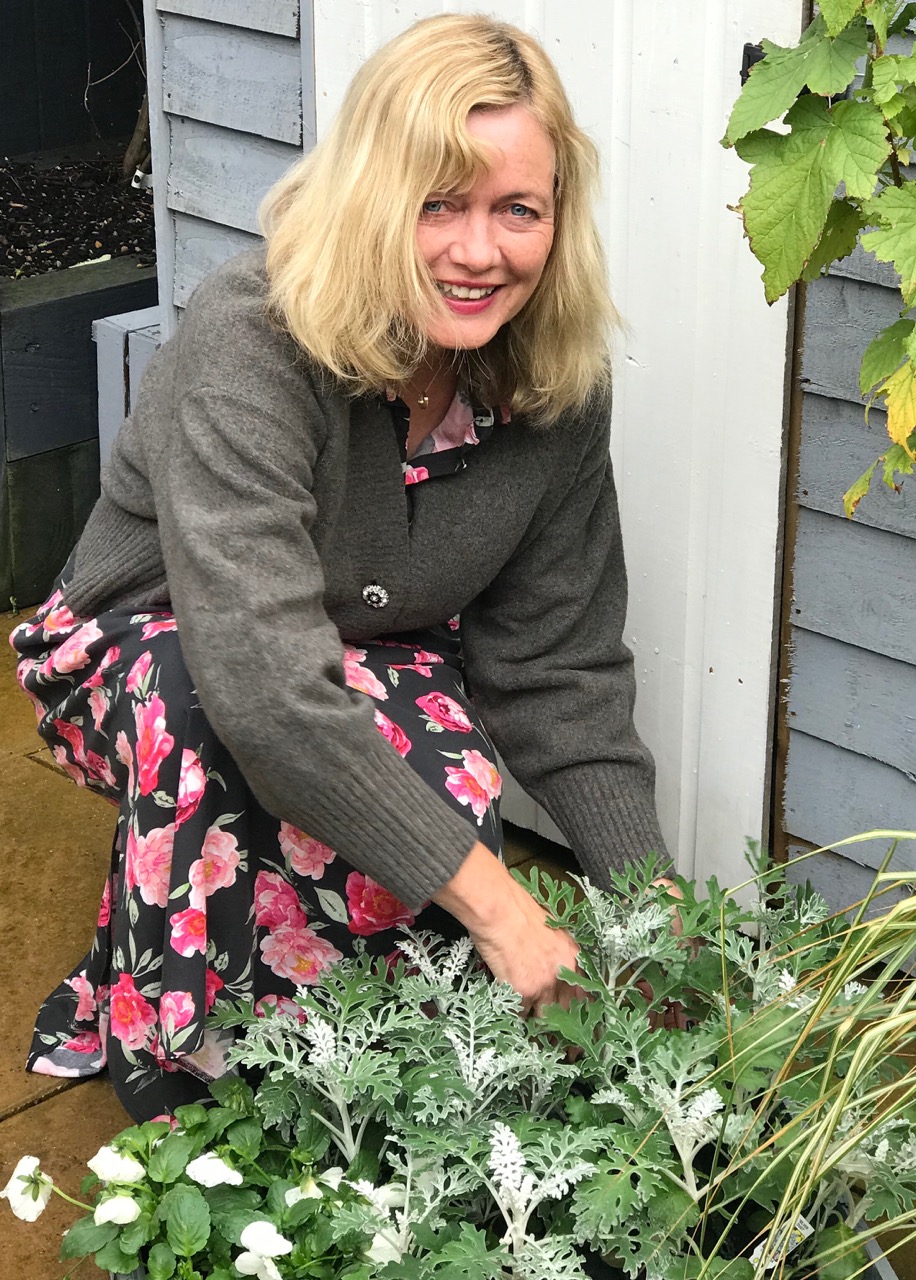
An experienced freelance journalist, editor and columnist writing for national magazines and websites, Fiona now specialises in gardens. She enjoys finding and writing about all kinds, from the tiniest town plots to impressively designed ones in grand country houses.
- Graham RiceFreelance writer
